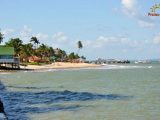Este post também está disponível em:
Português
English
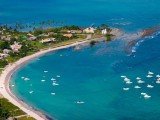
The beaches bathed by the blue, calm sea and warm waters of Itaparica Island in the Baia de Todos os Santos.
Itaparica Island is the largest island in the Bay of All Saints, in Bahia, and is the right destination for those seeking tranquility amidst exuberant nature for long days of rest.
With blue skies and strong sunshine, the days are slow to pass and the tourist will have enough time to visit beautiful beaches, taste the local gastronomy and still enjoy to relax and forget the rush of the big metropolises.
With more than 40 kilometers of beaches, Itaparica Island is divided into two municipalities: Itaparica and Vera Cruz, whose commercial center is better known as Mar Grande.
View the map of Itaparica Island
Surrounded by an extensive barrier reef, the island – whose name derives from the Tupi, “Itaparica” means “about stones” – has soft waters and natural pools formed in most of the beaches, especially at dry tide.
See the map of Baía de Todos os Santos.
In its extension it is still possible to find practically deserted coves, among them stands out Berlinque at the end of Vera Cruz.
For those who like a little more excitement and infrastructure, the beaches of Ponta de Areia and Itaparica (in Itaparica) bring together kiosks “foot in the sand” that serve local gastronomic delights such as the traditional acarajé and fish portions such as fillet of agulinha and pititinga.
There are also drinks based on abundant regional fruits such as mango, umbu and cajá.
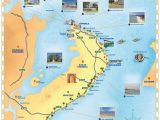
Located in the heart of the Bay and just 13km from Salvador, the island offers stunning and diverse landscapes.
The east-facing beaches (i.e., springs), for example, such as Duro and Gamboa (in Vera Cruz), enchant with their beautiful view of the silhouette of Salvador. As a postcard photo are the nights when the moon gradually appears behind the skyscrapers of the city, illuminating the calm local coves.
Videos about the Beaches and History of Itaparica Island
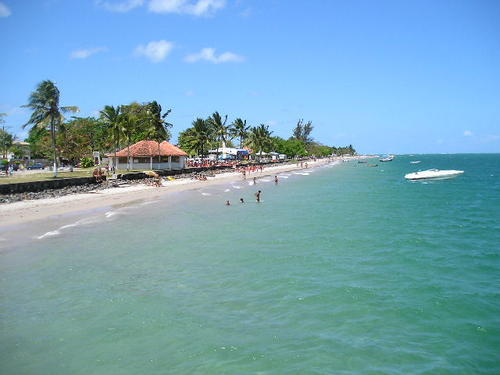

Ilha de Itaparica - Reportagem

Ilha de Itaparica - Dicas
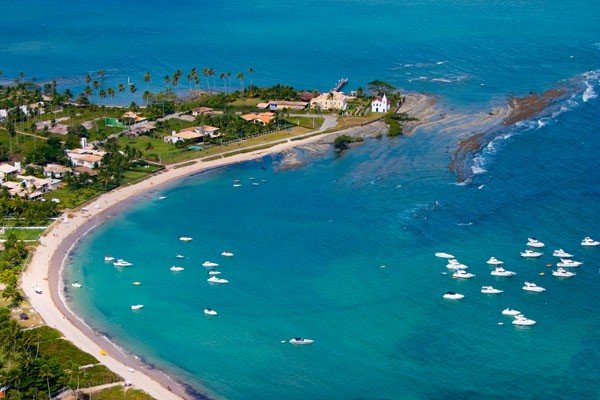
7 Melhores praias de Vera Cruz22:57
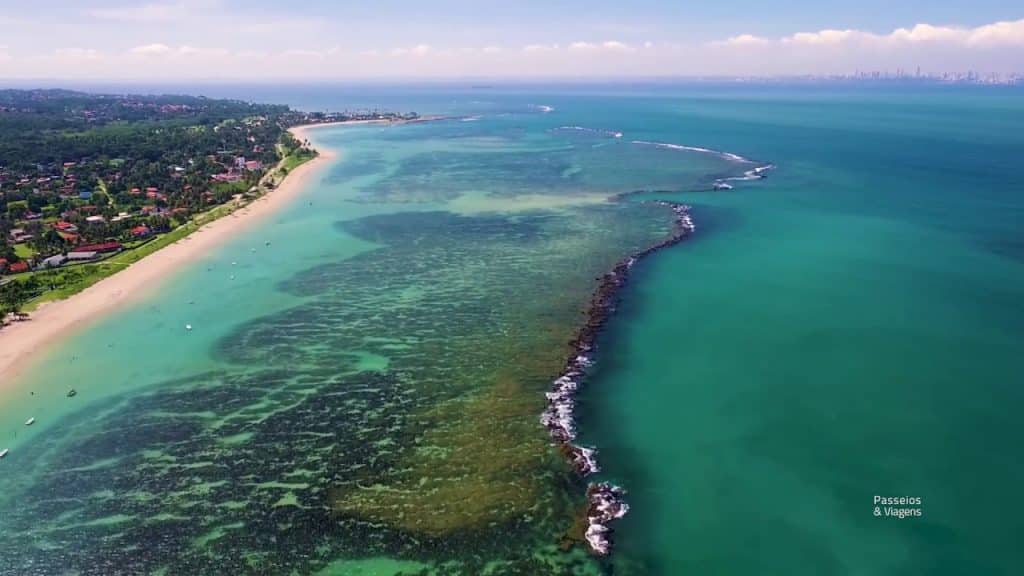
Praia da Penha na Ilha de Itaparica04:04
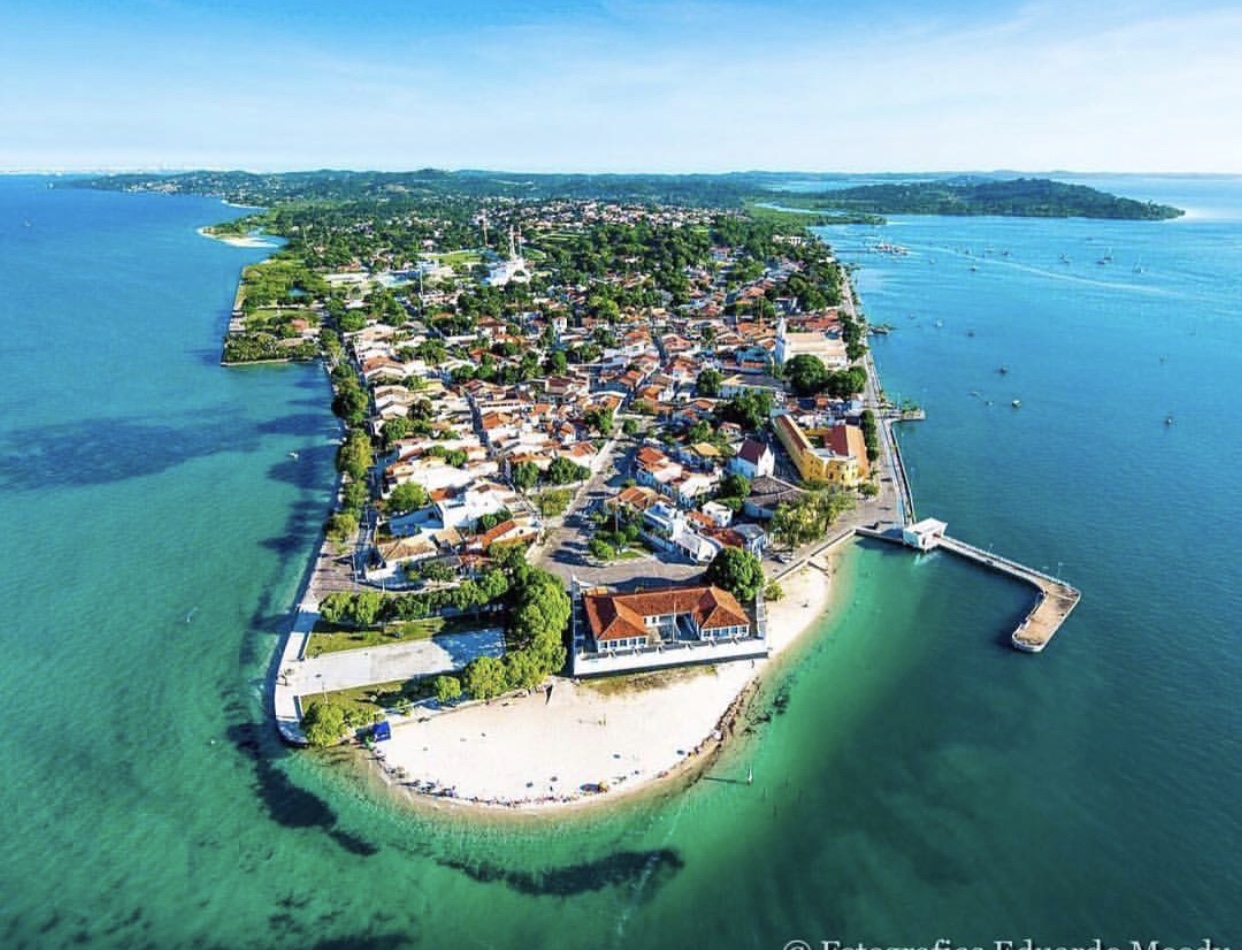
Guia de Turismo da ILHA DE ITAPARICA - Dicas
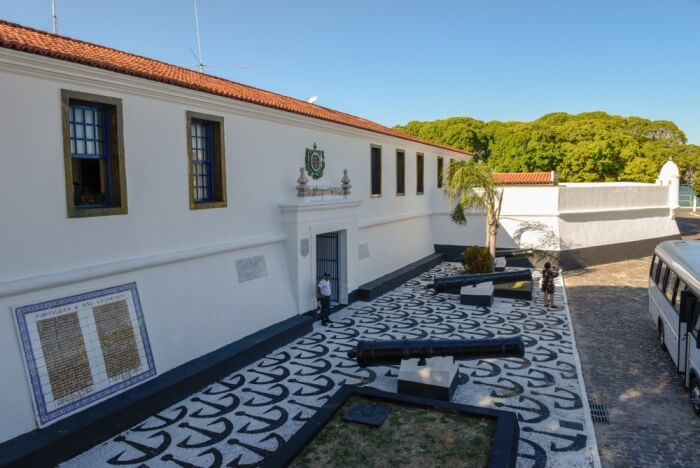
O BRASIL COMEÇOU NA ILHA DE ITAPARICA25:49
History of Itaparica Island
To return to the history of Itaparica Island is to return to the beginnings of our civilization.
The discovery of Brazil took place in Bahian lands, where today is Porto Seguro.
A year later, 720 km away from the point of discovery, Américo Vespúcio sighted Itaparicana Island on November 1, 1501. At the time the island was inhabited by the Tupinambás Indians.
Ten years later, in 1510, the Portuguese navigator Diogo Álvaro Correia, who became known as “Caramuru”, recorded his passage here.
By marrying the Tupinambá princess “Paraguaçu” he formed the first genuinely Brazilian family.
In 1552, the first governor-general of Brazil Tomé de Souza donated the island of Itaparica together with Matarandiba as sesmaria to António de Ataíde, 1st Count of Castanheira. Later, in 1556, it was converted by King John III of Portugal into a hereditary captaincy, and included in the morgado instituted in Portugal by the mother of the Count of Castanheira, Dona Violante de Távora in 1526.
The Jesuits were responsible for the colonization of Itaparica, which occurred in 1560, and settled on the back coast where today Baiacu is located, a rustic fishing village.
From 1600 the English and Dutch tried to occupy the island numerous times and were only expelled definitively by the Portuguese in 1647.
Even today in the municipality of Itaparica it is possible to observe monuments from that time such as the São Lorenço Fort, where the only ship demagnetization area in the country is located, and the Solar do Rei, which hosted D. João VI, D. Pedro I and D. Pedro II. Pedro II.
Until 1833, Itaparica Island was part of Salvador. With the growth of the city, increased tourism and administrative difficulties, the island was divided and in 1962 the municipality of Vera Cruz emerged.
One of the oldest architectures in the region, made in Baroque style, is the Church of São Lourenço (1610), which has its name inspired by São Lourenço, guardian of the rains and winds and patron saint of Itaparica Island.
In addition to this, other buildings such as the Igreja de Nossa Senhora da Piedade (1622), the Fortress of São Lourenço and (1711), where the flag of Independent Brazil was raised in 1823, and which is being prepared to become the first memorial of the War of Independence of Brazil in Bahia.
Historical Monuments on Itaparica Island
1. Historical center and house of the writer João Ubaldo Ribeiro
In the city of Itaparica itself you will find a historic center that was first listed as the Historic Center of Salvador in 1980. The site preserves buildings that were erected between the 17th and 18th centuries, whose old houses are largely in the Neoclassical style.
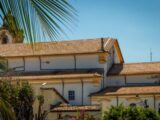
In addition, the Church of the Blessed Sacrament (also known as the Mother Church), the Church of São Lourenço, the Casarão Tenente João das Botas (who was a fighter in the war of independence of Itaparica), the Casarão Solar Del Rei and the fortress of São Lourenço, which was built by the Portuguese and ended up being taken by the Dutch.
And it is in this place, located in front of the fort, that the whale trade was formerly practiced during the 17th century as the main economy of the time.
In the center you will also find the house of one of the greatest Brazilian writers: João Ubaldo Ribeiro. The Praça da Quitanda served as inspiration for him to write his books. The place is 10 kilometers in the direction of Nazaré das Farinhas.
2. Fort of São Lourenço
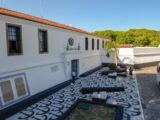
It is a 17th century fortress, built to try to stop Dutch invasions. More than a century later, it was the fort’s turn to serve as the stage for Bahia’s Independence.
Today the fort serves as a memorial to the Independence of Bahia, was inaugurated this year and is open to visitors free of charge.
3. Fonte da bica
The fountain is considered the first mineral instance in Brazil and was widely used during the 1940s as a way to encourage tourism. Many believe that its water is excellent for the kidneys, and locals categorically state that the mineral substances in it help people recover their health.
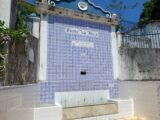
The water has diuretic medicinal properties and the natives claim that the fountain is rejuvenating. That is why there is a famous saying used in the region that is “fine water makes old woman become a girl”.
In any case, the spring water generates about 24,000 liters per day. And its name was born because the water flowed down the bamboo grove.
4. Forno and Church of Penha
Located in the region of Penha itself, on the island of Itaparica, the oven was used for the cremation of bodies that were brought by boats and that had been victimized by diseases such as smallpox.
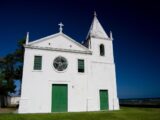
In addition to the oven, in the region there is also the Nossa Senhora da Penha Church, a big house and a lime kiln. When the tide is low it is possible to approach the ruins of the oven, but if it is high you have to enter the field, in the direction of Penha.
5. Church of Baiacu
You may not know it, but this is considered the third church that was built in Brazil. It is also known as the Church of our Lord of Vera Cruz. Unfortunately, today only ruins of it exist.
However, there is something unusual that draws attention. Its walls are still held together by a tree known as a gameleira.
The church is the most important historical monument of Vera Cruz, and it was literally swallowed up by the trunks and roots of the gigantic tree that was curiously born inside the building.
In this strange process of symbiosis it is no longer known where the tree begins and where the walls of the church building end, which remains standing due to the support that the tree offers it.
The church (and the tree) is located on Baiacu Beach which is approximately 10 kilometers from the ferry station.
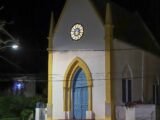
6. Igreja de Nossa Senhora da Piedade
This is the church of the city’s patron saint. It was built in 1854 and underwent a rebuilding in 1923. It is a small sanctuary, but it stands out for having been built in Gothic style.
The church is small and simple, but beautiful. It is located in Praça da Piedade, in the vicinity of Forte de São Lourenço.
7. Church of São Lourenço
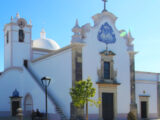
Unlike the church of Nossa Senhora da Piedade, the Church of São Lourenço was built in the Baroque style and features a mixed masonry of stone and brick.
It is considered one of the oldest churches in Brazil, whose opening was held for religious services in the year 1610.
In addition, its facade is characterized by the presence of a bulky tower with a pyramid-shaped termination.
Beaches of the Itaparica Island
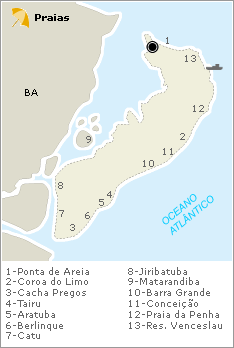
See the map of Itaparica Island
Surrounded by an extensive barrier of coral reefs, Itaparica Island has more than 40 km of beaches with blue, calm and warm waters.
In its extension it is possible to find bustling coves with complete infrastructure, as in Ponta de Areia, and also practically deserted beaches, such as Berlin.
which.
At dry tide, natural pools are formed and tourists can enjoy a quiet swim in the sea safely. The vegetation of the Atlantic Forest makes up the landscape of those who come to relax in the midst of the nature of the Island.
1. Ponta de Areia
One of the most touristic coves of the “Island”, the beach of Ponta de Areia has several options of beach huts for those who like to snack between one swim and another.
There are also kayak rental tents – the price may vary according to the season.
It is possible to find charming inns and small hotels in the area.
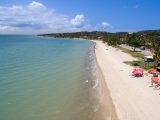
At night, there are some options of restaurants and bars, especially in high season.
2. Itaparica Beach
With kiosks by the sea, the cove of calm waters located in the north of Itaparica Island has complete infrastructure with restaurants, bakeries, pharmacies, hotels, etc.
It is home to the only ship demagnetization area in the country.
3. Cacha-Pregos Beach
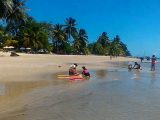
At the other end of Itaparica Island, to the south, is the village that takes its name from this quiet cove for most of the year.
You can find portions of fresh fish brought in by local fishermen at the stalls along the cove closest to the mainland.
4. Berlinque Beach
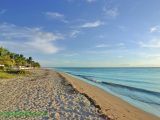
One of the most deserted beaches and far from the centers, both Itaparica and Vera Cruz, Berlinque presents tourists with its preserved vegetation;
Great choice for those who want to relax and escape from crowded beaches.
5. Penha Beach
Surrounded by a high standard condominium, Penha beach is one of the most beautiful in the quiet island of Itaparica.
The cove of blue waters has as its backdrop the Farol da Barra, in Salvador.
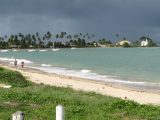
6. Barra Grande Beach
Because it contains small corals near the sand, it is easy to come across pools of warm water on the beach of Barra Grande.
At night, especially in season, there are concerts of local bands, predominantly axé and pagode.
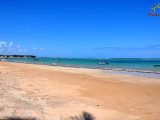
7. Duro Beach
Next to the Vera Cruz Maritime Port, where the boats that make the Salvador-Ilha de Itaparica crossing dock, is the bustling and always full Praia do Duro.
The small cove has a few kiosks that are always crowded and with loud music.
Itaparica Island Travel and Tourism Guide
